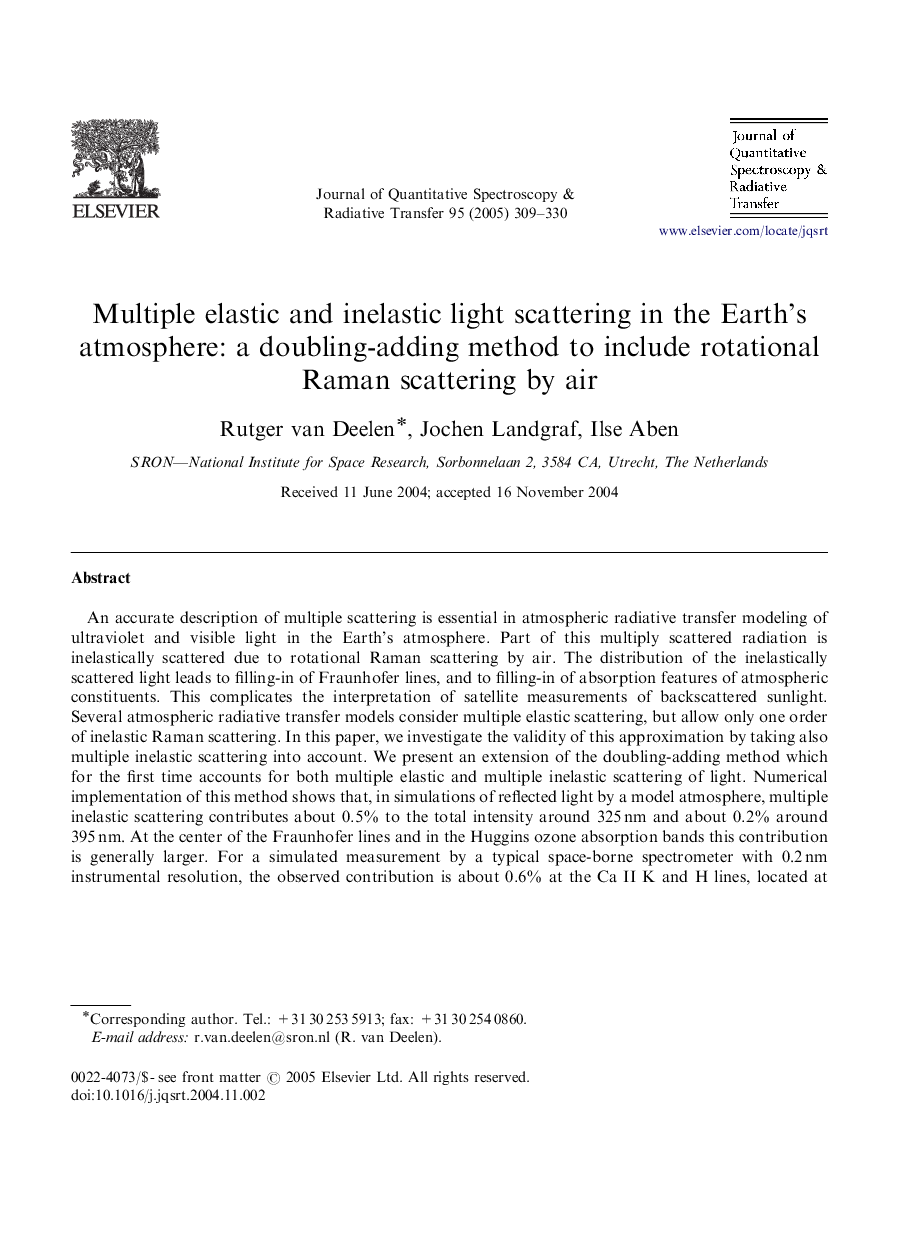| Article ID | Journal | Published Year | Pages | File Type |
|---|---|---|---|---|
| 9599029 | Journal of Quantitative Spectroscopy and Radiative Transfer | 2005 | 22 Pages |
Abstract
An accurate description of multiple scattering is essential in atmospheric radiative transfer modeling of ultraviolet and visible light in the Earth's atmosphere. Part of this multiply scattered radiation is inelastically scattered due to rotational Raman scattering by air. The distribution of the inelastically scattered light leads to filling-in of Fraunhofer lines, and to filling-in of absorption features of atmospheric constituents. This complicates the interpretation of satellite measurements of backscattered sunlight. Several atmospheric radiative transfer models consider multiple elastic scattering, but allow only one order of inelastic Raman scattering. In this paper, we investigate the validity of this approximation by taking also multiple inelastic scattering into account. We present an extension of the doubling-adding method which for the first time accounts for both multiple elastic and multiple inelastic scattering of light. Numerical implementation of this method shows that, in simulations of reflected light by a model atmosphere, multiple inelastic scattering contributes about 0.5% to the total intensity around 325nm and about 0.2% around 395nm. At the center of the Fraunhofer lines and in the Huggins ozone absorption bands this contribution is generally larger. For a simulated measurement by a typical space-borne spectrometer with 0.2nm instrumental resolution, the observed contribution is about 0.6% at the Ca II K and H lines, located at 393.48 and 396.97nm, respectively. At the 325nm Huggins ozone absorption feature this contribution due to multiple inelastic scattering is also about 0.6%.
Keywords
Related Topics
Physical Sciences and Engineering
Chemistry
Spectroscopy
Authors
Rutger van Deelen, Jochen Landgraf, Ilse Aben,
